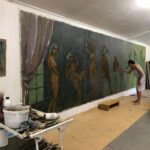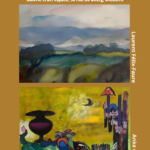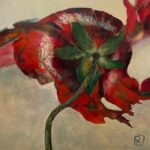Charlotte Grimard – Tiny Treasures
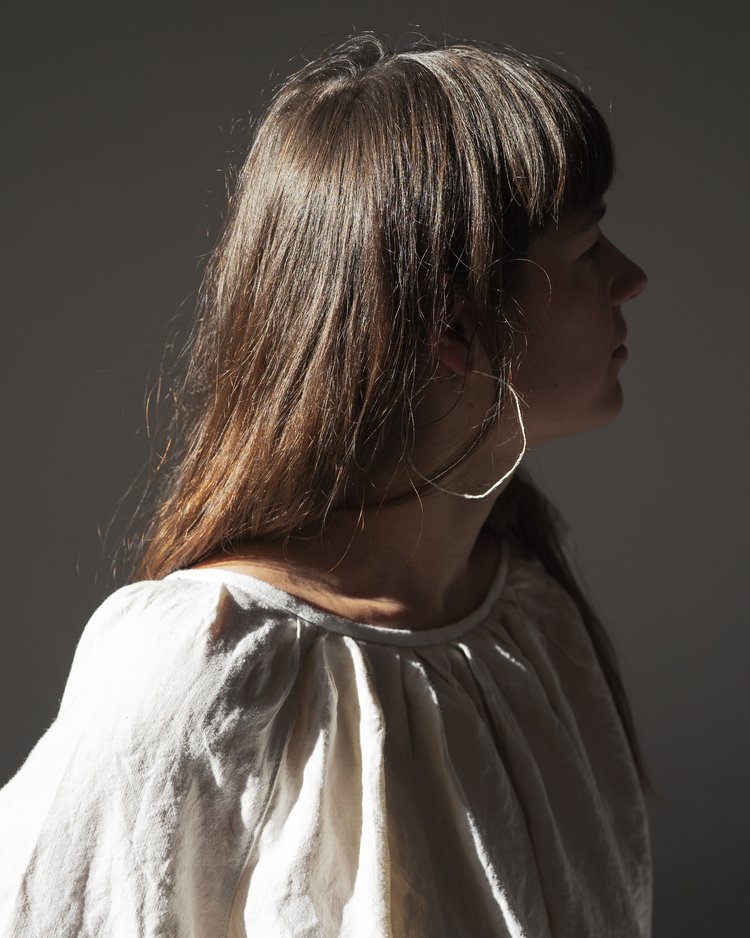
There is a mysterious dimension of life in art that can’t be calculated, can’t be measured, can’t be checked. In other words, it brings a precious sense of freedom to its adepts that stems from their acceptance of the unknown. I enjoy making art myself as well as exploring its many facets in the work of other artists. That is the reason why I initiated my blogs which gives an account of my meetings with those who live and work in the Drôme. They talk about the brilliant and masterly paintings of Benjamin Royaards, the splash of colours that characterises those of Nadine Nacinovic, the manner in which a foreigner, the English artist Fiona McLean, captures the very essence of the Drôme landscapes, or again the light that emanates from the paintings of Jean Soubeyran…and, the works of many others. These artists are all highly creative individuals who provide us with welcome gushes of fresh air in our over standardised, over regulated and so often unimaginative world. Reflections such as these usually come to me when I am confronted by large scale works like paintings, sculptures or installations. But this time for the purpose of this blog my eye happened to fall on much smaller objects.
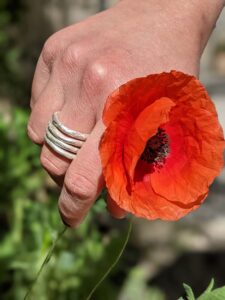 Quite by chance, I recently came across jewellery pieces that immediately struck me as genuine works of art. They were designed by an “Artisan Bijoutier” or craftsman-jeweller (or should I say craftswoman in this case?) whose name is Charlotte Grimard, an attractive thirty-five-year-old young woman with an outgoing communicative nature. Creativity and fantasy are clearly her trademarks. Having seen pictures of her work, before we met, I had already visualised her figure sitting over her workbench carving, cutting and shaping a silver or gold plate into a truly artistic creation. And, when I walked into her workshop (SAASH) at l’Usine in le Poët Laval that’s exactly how I found her.
Quite by chance, I recently came across jewellery pieces that immediately struck me as genuine works of art. They were designed by an “Artisan Bijoutier” or craftsman-jeweller (or should I say craftswoman in this case?) whose name is Charlotte Grimard, an attractive thirty-five-year-old young woman with an outgoing communicative nature. Creativity and fantasy are clearly her trademarks. Having seen pictures of her work, before we met, I had already visualised her figure sitting over her workbench carving, cutting and shaping a silver or gold plate into a truly artistic creation. And, when I walked into her workshop (SAASH) at l’Usine in le Poët Laval that’s exactly how I found her.
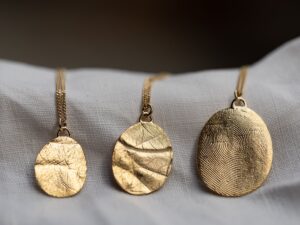 Charlotte has divided her work in two categories: Imprints and Engagement Rings. Bonding is what the latter are all about and each one is a unique piece of art. The imprints go a step further. They are not only singular but also the result of a creative act she wants to share with the person who will wear them. The jewels may be rings again but also earrings, pendants, brooches or any other kind of ornament. To this end an imprint of the fingertip or the palm of the hand (perhaps even another body part?) of the receiver, or the giver depending on the case. The shape too, will be decided in dialogue with the artist. The pieces of jewellery which are modelled, if they so wish, in concert with them therefore carry the pattern of these intimate lines making them in the strictest sense absolutely unique. Charlotte’s art seems to be underpinned by a philosophy that’s very much in keeping with her warm and enthusiastic personality. “I’m convinced I am making useful art” she says, adding “And, I do so with lots and lots of love.”
Charlotte has divided her work in two categories: Imprints and Engagement Rings. Bonding is what the latter are all about and each one is a unique piece of art. The imprints go a step further. They are not only singular but also the result of a creative act she wants to share with the person who will wear them. The jewels may be rings again but also earrings, pendants, brooches or any other kind of ornament. To this end an imprint of the fingertip or the palm of the hand (perhaps even another body part?) of the receiver, or the giver depending on the case. The shape too, will be decided in dialogue with the artist. The pieces of jewellery which are modelled, if they so wish, in concert with them therefore carry the pattern of these intimate lines making them in the strictest sense absolutely unique. Charlotte’s art seems to be underpinned by a philosophy that’s very much in keeping with her warm and enthusiastic personality. “I’m convinced I am making useful art” she says, adding “And, I do so with lots and lots of love.”
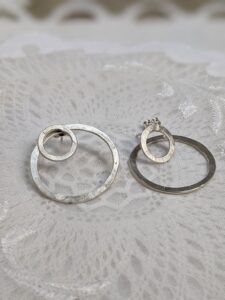 Looking at Charlotte’s work from a more general perspective, what struck me first, is the contemporary style. Despite the reduced format they made me think of well balanced and harmonious much larger abstract works of art. In particular the Imprints. I was therefore hardly surprised to read that she had worked for a number of years as an aide of Joep van Lieshout in Holland and Anselm Kiefer in Paris, both top ranking contemporary artists on the international scene. The quality of Charlotte’s work is unquestionable besides which in her own words her art is useful. She also puts her heart into what she makes. All the more reason to find out more about her unusual life course. She has kindly accepted to answer the few following questions.
Looking at Charlotte’s work from a more general perspective, what struck me first, is the contemporary style. Despite the reduced format they made me think of well balanced and harmonious much larger abstract works of art. In particular the Imprints. I was therefore hardly surprised to read that she had worked for a number of years as an aide of Joep van Lieshout in Holland and Anselm Kiefer in Paris, both top ranking contemporary artists on the international scene. The quality of Charlotte’s work is unquestionable besides which in her own words her art is useful. She also puts her heart into what she makes. All the more reason to find out more about her unusual life course. She has kindly accepted to answer the few following questions.
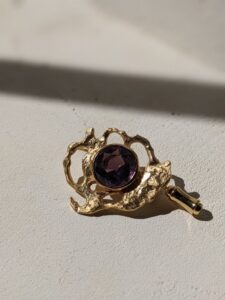 Question
Question
You say that you are convinced that the art you make is “useful”. Why and how?
Answer
The messages I receive from my clients tell me that my art is at their service and that I can help them to preserve a memory and share their story by having it permanently engraved.
Question
You do it with “a lot of love.” So, apart from the simple need to create, there’s a state of mind that accompanies your work. Does this love reside in the satisfaction you get from your work for yourself, or perhaps in the projection of the love you give to others?
Answer
It’s obvious that as I work on each object with someone in mind, who will perhaps wear it for years and then pass it on, I do my best to put my whole heart into it.
Question
You chose to become a jeweller. Why did you make this choice?
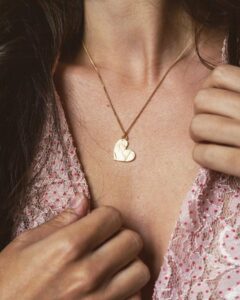 Answer
Answer
It wasn’t really a choice. After my years as a mould-maker with Anselm Kiefer, a friend, Agnès, insisted that I go and discover the work of René Talmon L’Armée, Joaillier in Paris. That was when I became fascinated by the craft of creating unique works on such a tiny scale. All the tools I used were the same, but much smaller and yet with an enormous range of possibilities. He hired me to help him in the research of textures. In exchange he became my jewellery master for several years. After which I moved to the Drôme.
Question
What is your basic training and your artistic itinerary?
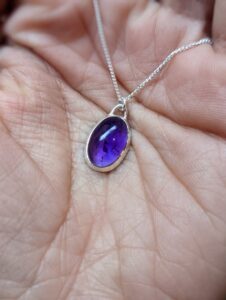 Answer
Answer
I followed Upgrading Classes in Applied Arts, a BTS in Fashion Design, then a DSAA in Textile Design and as a result I have always been involved in the processing of materials. Having participated as a trainee in various internships in Brazil and in Madrid, I was also an assistant at the Ateliers of Joep Van Lieshout in Rotterdam, Anselm Kiefer in Paris, then René Talmon L’Armée in Paris.
Question
Spending several years with well-known contemporary artists whose work is so different from yours, such as Joep van Lieshout and Anselm Kiefer, seems to me to be rather unusual for a jeweller. What influences do you think these great artists have had on you?
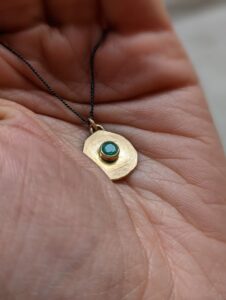 Answer
Answer
They’ve clearly provided me with the opportunity to experiment the use of all kinds of materials and techniques, such as soldering, polystyrene sculpture, fiberglass and moulding. For me there are no limits when it comes to creating materials and experimenting with jewellery prototypes, because I consider that each piece is a small work of art.
Question
Consulting your website, which is very well done, and the way you’re organised, suggests that as well as being an artist you also have a strong entrepreneurial spirit. Am I wrong?
Answer
Absolutely not. Five years managing a Parisian jewellery workshop taught me to run a small company. I’ve now been in charge of my own workshop for the past 3 and a half years, with my first employee, and every day there are new challenges. That is how I keep on learning how to be the owner of a business, and also how to be a good humoured one.
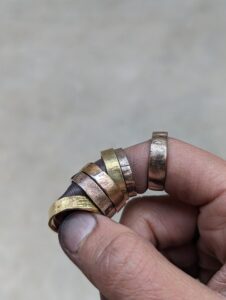 Question
Question
The life of an artist is difficult and it is often not a very profitable one. For a jeweller like yourself, with a beautiful workshop, expensive equipment and high-quality material, apart from a certain degree of constant sales, you undoubtedly require other means of income to support yourself. How do you manage?
Answer
As things stand today, there is a certain amount of uncertainty (I find it hard to imagine having to rely on regular sales) but I’ve always only moved forward when I could afford to do so and I have never made any debts. There is always a bit of stress at every next stage, but it feels great to have many ideas and make plans!
Question
Do you have any plans for the future?
Answer
I’ve got lots of plans! I’m going to try to bring sculpture back into my main work and exhibit in Paris. I’ve been developing a new technique since a few weeks now, electroforming, which allows me to metalise natural materials, and I’m really excited about the new prospects it opens up
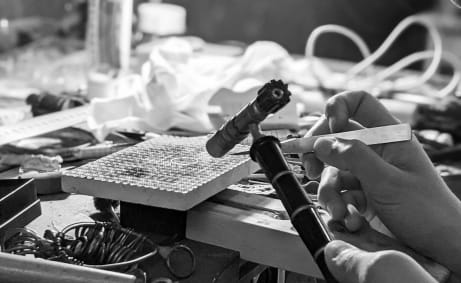
Posted in: Art
